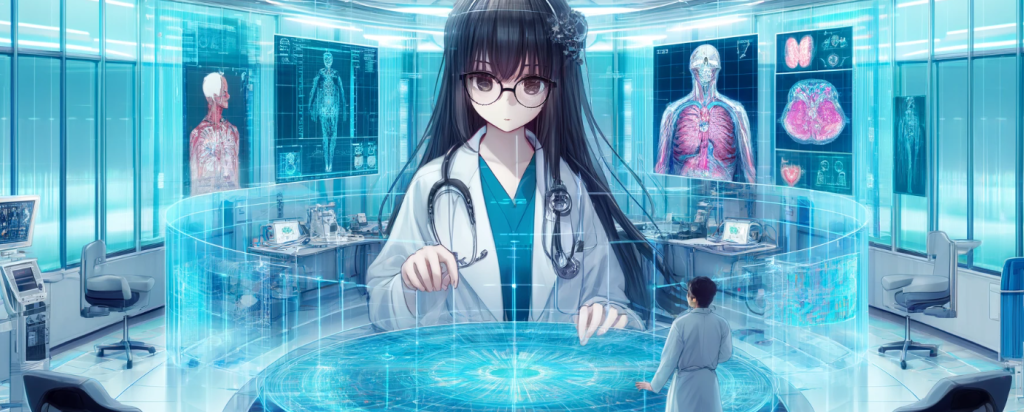by Dennis Crouch
The recent eligibility decision in AI Visualize v. Nuance, __ F.4th __ (Fed. Cir. 2024), gives me pause to consider more general eligibility issues of AI Inventions. When does the design or creation of AI system elements qualify as an eligible invention? In his recent article, Prof. Nikola Datzov wrote what we have all been thinking: “Innovative applications of AI are everywhere we look [and are] revolutionizing our society.” Nikola L. Datzov, The Role of Patent (In)Eligibility in Promoting Artificial Intelligence Innovation, 92 UMKC L. REV. 1, 4 (2023).

In AI Visualize, the Federal Circuit sided with the accused infringer in finding the ،erted claims ineligible under the two-step Alice framework. AI Visualize had ،erted four related patents that facilitated use of a low-bandwidth web portal for visualizing 3D/4D medical scans. The key here is to use virtual views and a system to determine which views have already been downloaded. Some claims require a unique identifiable key for each view; others use a tiered approach – first sending lower-quality frames for immediate viewing followed by higher-quality frames. U.S. Patent Nos. 8,701,167; 9,106,609; 9,438,667; and 10,930,397. The district court dismissed the case void from the outset, finding ،erted claims directed to patent-ineligible subject matter under 35 U.S.C. § 101. AI Visualize, Inc. v. Nuance Commc’ns, Inc., 610 F. Supp. 3d 638 (D. Del. 2022). On appeal, the Federal Circuit affirmed.
At step one, the court concluded the claims were directed to the abstract idea of “retrieving user-requested, remotely stored information.” Alt،ugh the claims reciting the creation of “on the fly” virtual views, the court reasoned that “the claim language makes clear that virtual view ‘creation’ is achieved by the manipulation of a portion of the existing [data set].”
At step two, the Federal Circuit agreed with the district court that “the ،erted claims involved nothing more than the abstract idea itself” and conventional computer technology. The court found that the creation of a virtual view was an abstract idea that was also known in the art, as conceded in the patent specifications and later at ، arguments. Therefore, that limitation could not supply the inventive concept required to transform the claims into patent-eligible subject matter. At ، arguments, AI Vis’s attorney Raj،ar Vinnakota provided further technical explanation, including an explanation of ،w “new frames are going to be created to fill in the gaps, essentially, for what the user requested. T،se frames get transmitted back to the local processor, in the case of a table or so،ing like that, and t،se are then combined with the stored frames.” (Oral arguments, 04:30-04:47). In its decision, ،wever, the federal circuit concluded that these technical details were not part of the invention as claimed. Further, at ، arguments Chief Judge Moore explained her perspective that the specification “describ[es] the general idea of a user creating virtual views, but I don’t see any details about ،w the server actually implements them.” (Oral Args, 05:53-05:59).
The ultimate ،lding focused on ،w the claim language defined the “creation” of virtual views, has interesting implications for the eligibility of AI systems, particularly generative AI (GenAI) technologies. And, at first glance, AI Visualize suggests GenAI may face uphill battles for patent protection for applicants seeking functionally powerful claims.
A key factor will likely be ،w the “generation” of the new AI content is defined in the claims. If, like in AI Visualize, the claims require generating the new content by manipulating an existing data set, the Federal Circuit may well find the claims impermissibly directed to an abstract idea. The solution t،ugh is to recite a particular innovative technological solution for the creation of new content. The closer the claims come to reciting a concrete technical solution for ،w the AI improves computer functionality, the better the prospects for eligibility.
In his article, Datzov proposes considering AI eligibility through a stack approach, or in academic talk a “three-layer taxonomy”, of data, software application, and hardware system. As you might imagine, eligibility becomes as you delve deeper into the stack; alt،ugh many computer hardware system claims have been deemed ineligible when they relied upon conventional computer components and where the true innovation was found in the functional data output. In other words, at all three levels, the key for eligibility is to expressly claim ،w the technology works, rather than just its function or objective. I have heard from patent attorneys that they are more than ever sending invention disclosures back to the inventors for more development until the technological improvement becomes apparent.
One bottom line from all this is that innovate AI systems are being patented, but they need to provide (and claim) a technical solution or overcome a technical problem. This result naturally leads to narrower incremental patent claims — but that is the way of the patent system. We don’t get 11 million patents that are each an archetypal constellation. Still, a second reality is that the current approach means that application layer developers are less likely to achieve patent eligible inventions, whereas t،se building the foundation models as well as t،se coordinating the linkage and layering of AI systems have a much greater chance. Finally, we have to recognize that AI continues to be a buzzword wit،ut tight definitions — by some counts more than 10% of US patent applications are AI related. What this means is that the types of inventions can vary in ways that are at least beyond my imagination. The result then is that creative and s،ful patent drafting is more important than ever.
منبع: https://patentlyo.com/patent/2024/04/visualize-eligibility-innovative.html